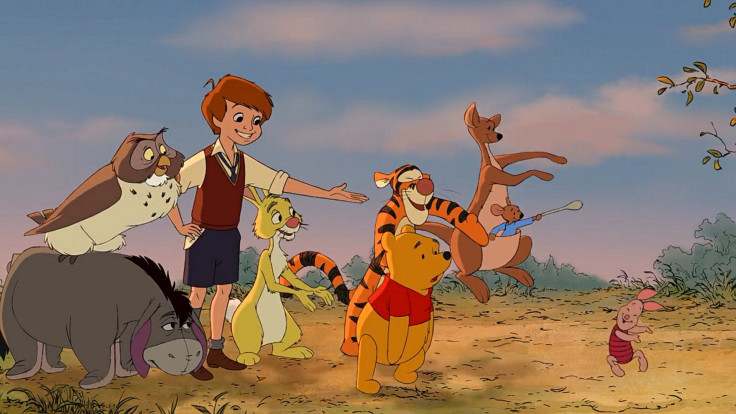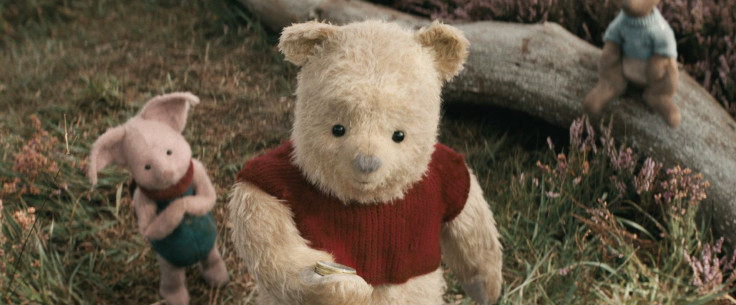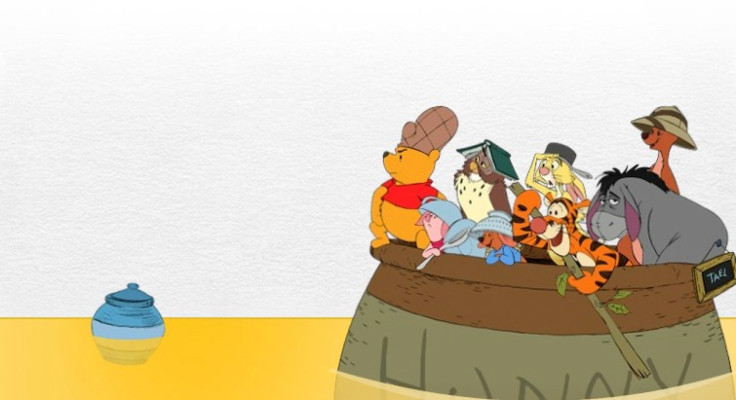25 Surprising 'Winnie The Pooh' Facts: The Good, The Bad And The Weird

KEY POINTS
- Author Alan Alexander Milne took inspiration from the Canadian black bear named "Winnie"
- "Winnie the Pooh" is a male character, unlike the real bear that inspired him
- Christopher Robin, Milne's son, had a love-hate relationship with his father
Not only did "Winnie the Pooh" do well commercially, but it also became a cultural phenomenon among children and adults through the years. The beloved honey-guzzling bear has an established career in literature and film that he continues to be relevant to the present era.
Celebrate National "Winnie the Pooh" Day this Jan. 18 by reading through this list of surprising facts about your favorite "silly old bear" that goes personal from the good, the bad and the weird.
1. "Winnie the Pooh" was written amid the dark times that followed at the end of World War I.
2. It was inspired by a real bear.
Alan Alexander Milne, the author of the "Winnie the Pooh" tales, took inspiration for "Pooh" from a Canadian black bear after becoming fond of the animal. The bear was taken in by ZSL London Zoo in 1915, and it remained there until its demise in 1934.
3. But before "Winnie the Pooh" sprung to life, Canadian veterinarian Lt. Harry Colebourn dubbed the cub Winnipeg aka "Winnie" when he discovered it in 1914.
4. Colebourn bought cub "Winnie" for only $20.
5. The Winnipeg regiment of the 2nd Canadian Infantry Brigade used the real "Winnie" as their official mascot, and soldiers even took photos with her.
6. Colebourn rewarded "Winnie's" training with apples and a sweetened condensed milk and corn syrup concoction.
7. Despite his pacifist beliefs, Milne enlisted in the military to serve against Hitler and the Nazis.
8. As a result of being domesticated and trained, the real "Winnie" was said to have slept beneath "Colebourn's cot and followed him like a puppy."
9. Milne gave his son, Christopher Robin Milne, a teddy bear that made growling sounds for his first birthday.
10. Christopher's teddy bear's name was changed from Edward to Winnie after he went to the London Zoo, where the real "Winnie" was kept.
11. "Winnie" wasn't a wild animal at all because she showed an incredible demeanor.
Christopher became fond of "Winnie" and was even allowed to feed it!
12. "Winnie the Pooh" is a male character, contrary to the real bear that inspired him.

13. "Winnie" passed away in 1934. She was so beloved that the Royal College of Surgeons of England decided to put her skull on display in their Hunterian Museum.
"Children and adults who visit the Hunterian Museum will now have an opportunity to learn about the real Winnie and how she inspired A.A. Milne," Dr. Sam Alberti, the Director of Museums and Archives at the Royal College of Surgeons, said. "Her story and presence in our collection are a reminder of how learning about animal health can enhance our understanding and care for species around the world."
14. The swan that first appeared in Milne's 1924 children's poetry book "When We Were Very Young" sparked the adoption of "Pooh" as the second name for the fictional character.
"Christopher Robin, who feeds this swan in the mornings, has given him the name 'Pooh,'" as per TIME. "This is a very fine name for a swan because if you call him, and he doesn't come (which is a thing swans are good at), then you can pretend that you were just saying 'Pooh!' to show him how little you wanted him."
15. On the other hand, Milne's 1924 collection included "Winnie the Pooh's" first appearance without his name in "When We Were Very Young."
"Winnie the Pooh" was described as "a bear, however hard he tries/Grows tubby without exercise," according to the CBC.
16. "Winnie the Pooh," written by Milne and drawn by Ernest Howard Shepard, was the first collection in the series.
It was an instant hit upon its publication date in 1926, selling over 150,000 copies in the United States and 35,000 in the United Kingdom.
17. Before being an illustrator of "Winnie the Pooh," Shepard first served in the military under the Intelligence Department, sketching maps of combat areas.
18. All the characters in "Winnie the Pooh" were inspired by the toys gifted to Christopher.

Christopher's father, Milne, gave him the teddy bear ("Winnie the Pooh") for his birthday. Other stuffed animals soon followed: a piglet (Piglet), a tiger (Tigger), a donkey (Eeyore) and a kangaroo (Kanga).
19. Only Wol the owl and Rabbit the rabbit were completely original creations by Milne and not based on Christopher's toys.
20. Some characters in "Winnie the Pooh" were associated with different mental illnesses.

The theory is that the characters may signify a spectrum of mental disorders manifested in their behaviors.
Pooh represents an eating disorder, which may be observed in his oral and obesessive dependence on honey.
Piglet's restlessness and inability to focus are symptoms of an anxiety disorder.
Tigger, on the other hand, has attention-deficit hyperactivity disorder (ADHD) as he exhibits hyperactivity and impulsivity.
Major depressive illness is exemplified by Eeyore, who has symptoms such as "depressed mood most of the day, markedly diminished interest or pleasure in activities, fatigue or loss of energy nearly every day, feelings of worthlessness, and diminished ability to think or concentrate," according to Abnormal Psychology.
Rabbit's apparent fixation on the need to organize and classify individuals, with himself always at the top, is indicative of a narcissistic personality disorder paired with obsessive-compulsive disorder (OCD).
Owl fits the profile of being dyslexic as he often misreads or misspells words.
The fictional Christopher Robinson is also believed to suffer from schizophrenia. This may stem from his vivid imagination, allowing him to regard his animal friends as if they were real.
21. A collection of Christopher's toys was donated by Milne's publisher in 1987 and displayed in the children's section at the New York Public Library.

22. The "amazement and disgust" that Milne felt at his son's overwhelming fame eventually led him to put off writing children's books.
23. Christopher had a love-hate relationship with his father and his creation, Pooh.
"For it was [then] that began that love-hate relationship with my fictional namesake that has continued to this day," he wrote in The Enchanted Place. "At home, I still liked [Christopher Robin], indeed felt at times quite proud that I shared his name and was able to bask in some of his glory. At school, however, I began to dislike him, and I found myself disliking him more and more the older I got. Was my father aware of this? I don't know."
Although he wasn't particularly bullied, Christopher got teased at school in the form of playing old "Winnie the Pooh" records. He also had a difficult time obtaining employment, which was an issue he attributed to his father and Pooh.
24. Margot Robbie and Domhnall Gleeson starred in the biological drama film of the Milne family titled "Goodbye Christopher Robin."
25. Walt Disney paid $350 million for the rights to "Winnie the Pooh."
© Copyright IBTimes 2024. All rights reserved.





















